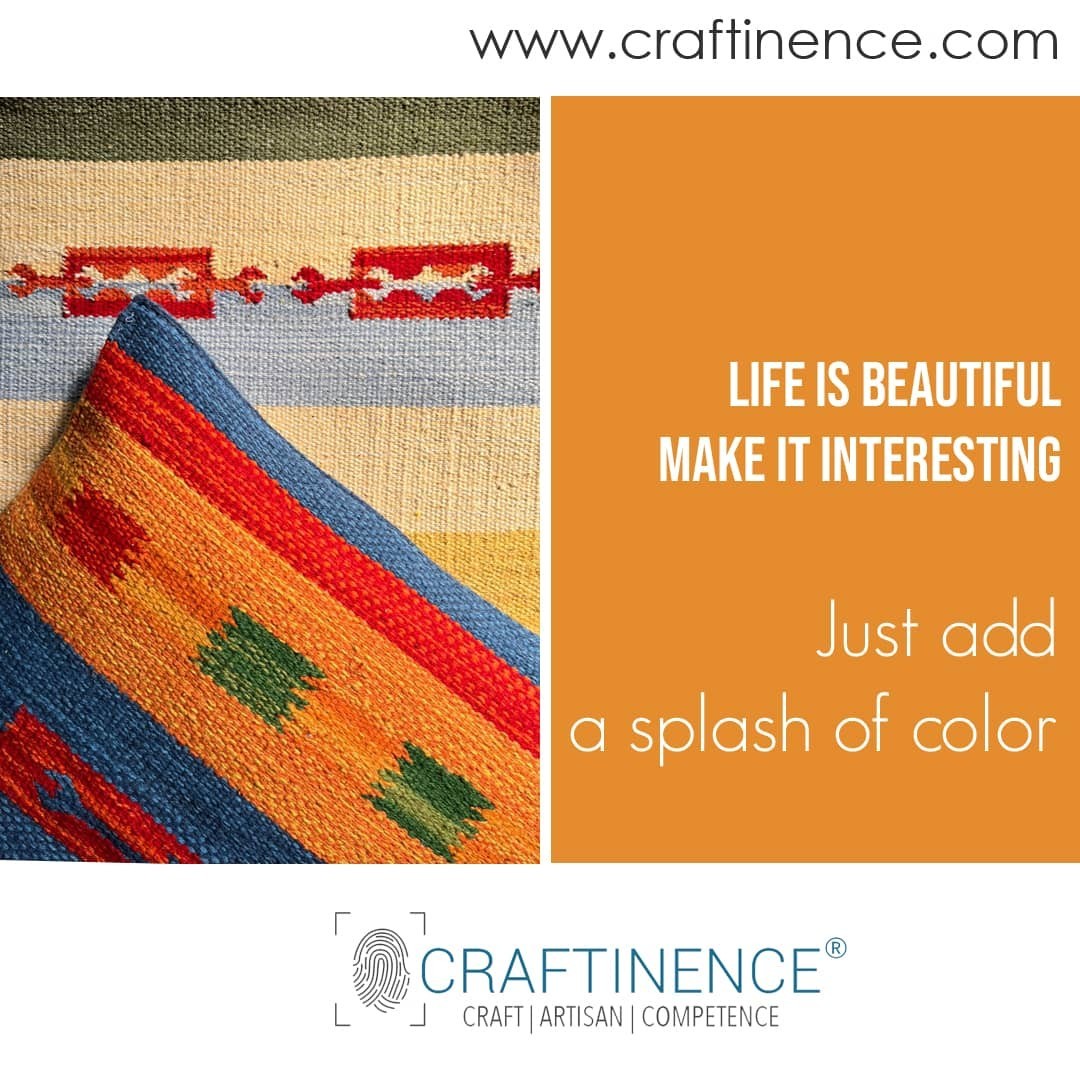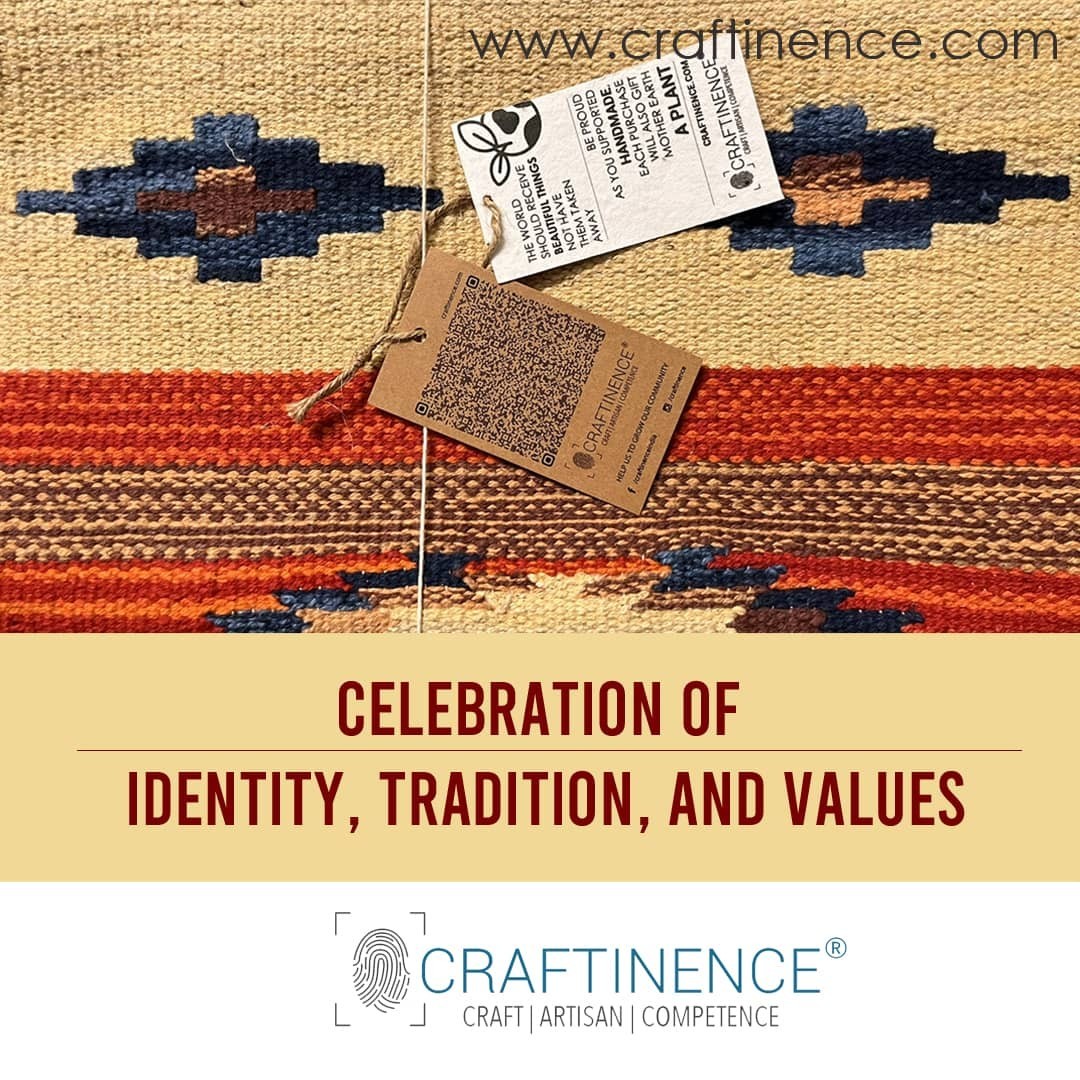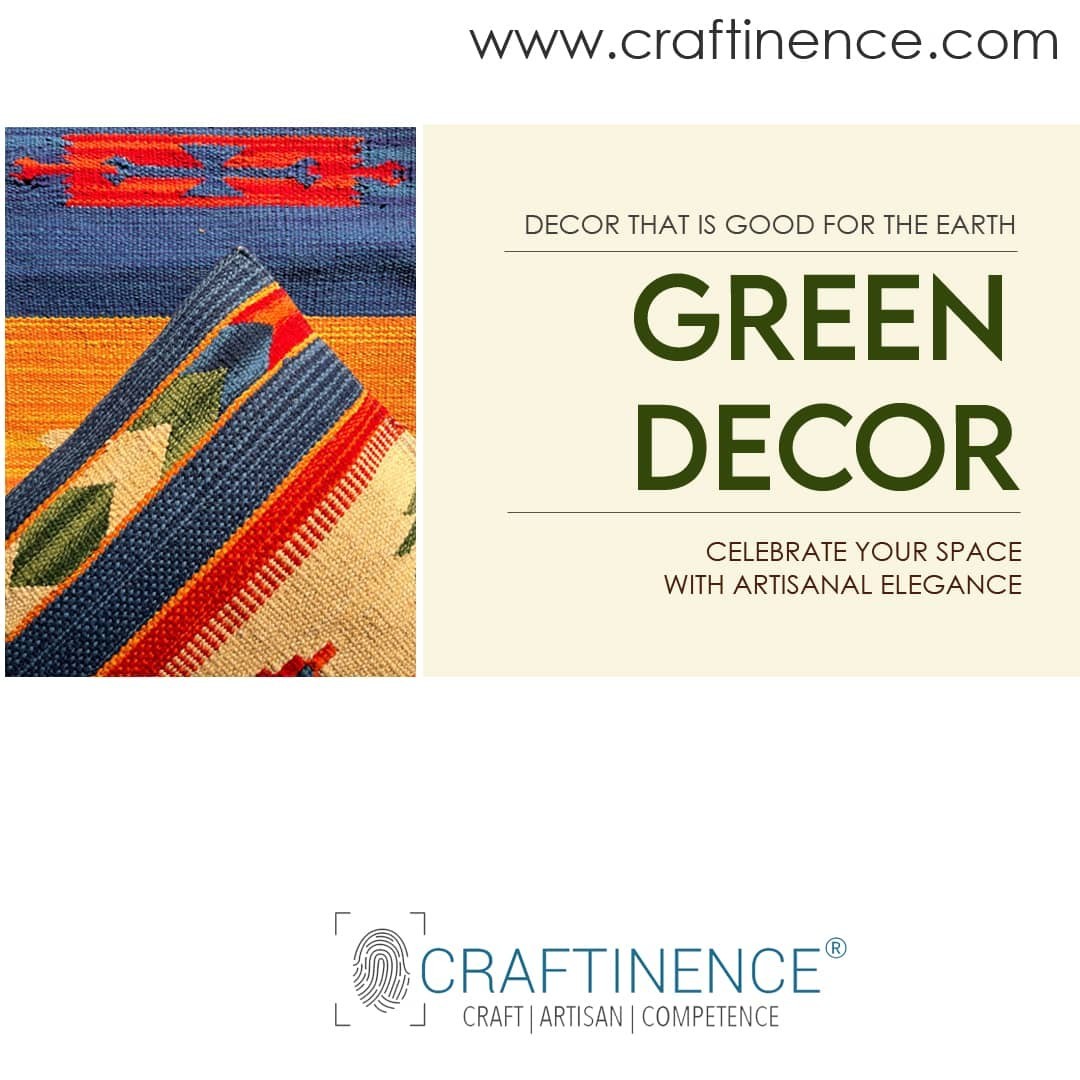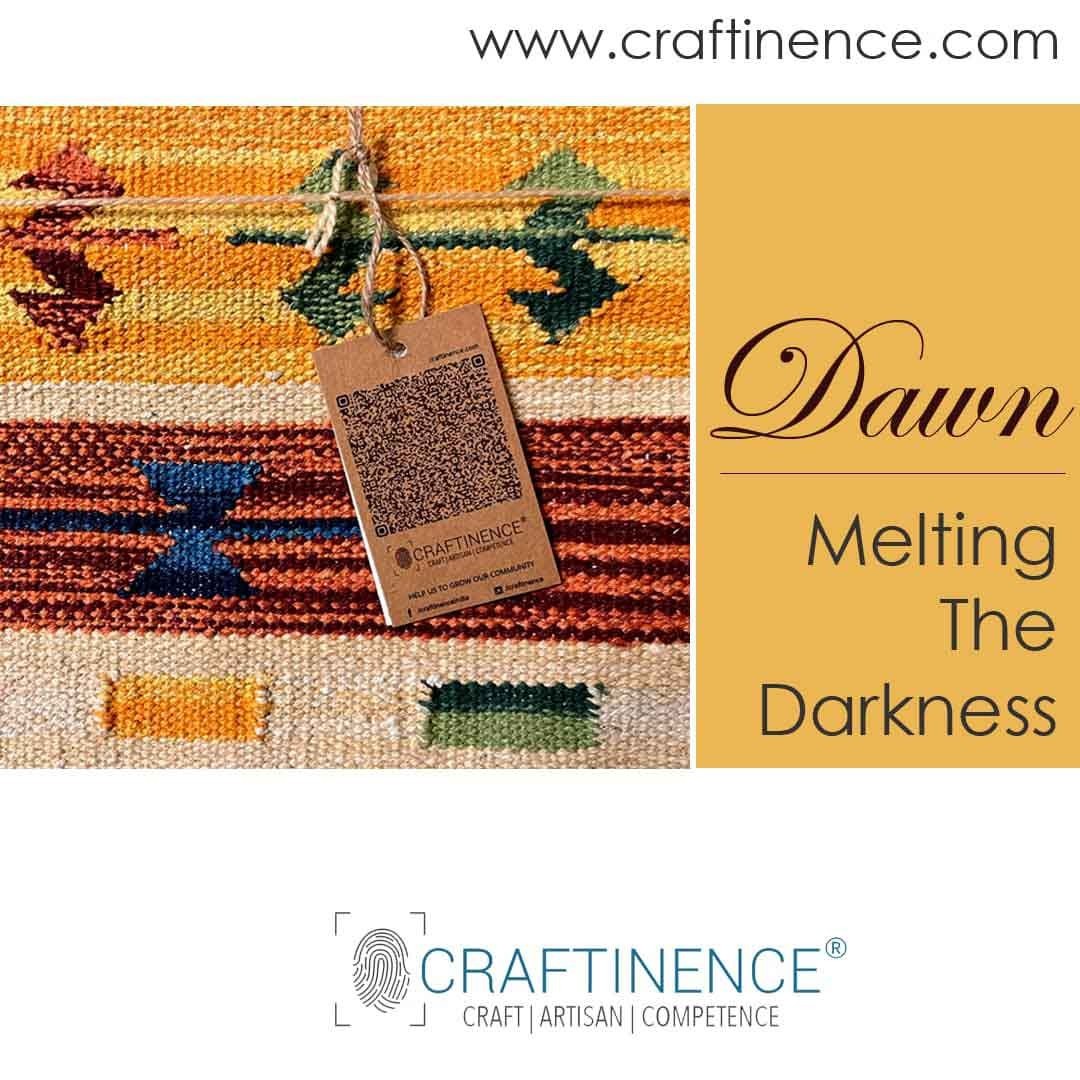Categories
Latest Post
-
comment 0 comments
-
10 Reasons to Be Proud of Owning a Handmade Craftinence®...
comment 0 comments -
Say Goodbye to Boring eco friendly gifts Gifts: Discover...
comment 0 comments -
Cushion Cover Set of 5: A Home Design Must-Have
comment 0 comments -
Discover This Holi how Craftinence® & EarthBased Are...
comment 0 comments -
How to Keep Your Dining Table Mats Clean and Maintained:...
comment 0 comments
Recent Comments
-
These boho bags are useful & easy to carry. Best companion during your casual...Mar 1, 2024

Transformation of Interior Design through Hand Woven Fabrics-artisans crafting home interior design
Interior design is an art form that transforms living spaces into havens of comfort, beauty, and personal expression.
One of the most impactful ways to achieve a unique and inviting atmosphere is through the use of hand woven fabrics.
These textiles, especially those crafted by artisans, bring a rich history and cultural depth to any room. Among the myriad of handwoven fabrics,
kilim stands out for its vibrant patterns and versatility. Let’s explore how kilim cushion covers, table mats, and table runners can enhance your home improvement projects and why interior designers are increasingly incorporating these exquisite handmade pieces into their designs.
The Allure of Hand Woven Fabrics
Hand woven fabrics are a testament to traditional craftsmanship and artistry. Unlike machine-made textiles, these fabrics are created using age-old techniques that have been passed down through generations. This process imbues each piece with a unique character, making it a one-of-a-kind addition to any home.
Benefits of Hand Woven Fabrics:
• Unique Designs: Each piece is unique, reflecting the artisan's skill and creativity.
• High Quality: Handwoven textiles are often more durable and of higher quality than mass-produced items.
• Cultural Heritage: These fabrics preserve traditional techniques and support local artisans.
Handwoven Textile: A Timeless Tradition
Kilim is a type of flat-woven textile that originated in the regions of Turkey, the Balkans, and parts of the Middle East and Central Asia. Known for its geometric patterns and vibrant colors, kilim is often used to create rugs, cushion covers, table mats, and runners. The intricate designs and bold hues of kilim textiles can add a touch of exotic elegance to any interior space.
Kilim cushion covers are a perfect way to introduce a splash of color and pattern into your living room or bedroom. These covers can transform a plain sofa or bed into a focal point of the room. Here’s how to use them effectively:
• Mix and Match: Combine different patterns and colors to create a dynamic look.
• Accent Pieces: Use kilim cushion covers as accent pieces on neutral furniture to create visual interest.
• Layering: Layer them with other textiles like throws and blankets for a cozy, eclectic feel.
Kilim Table Mats and Table Runners
Incorporating kilim table mats and table runners into your dining area can make every meal feel like a special occasion. These items not only protect your table but also add a layer of texture and warmth to your dining space.
• Table Mats: Use kilim table mats to add individual touches to each place setting, making your dining table more inviting.
• Table Runners: A kilim table runner can be the centerpiece of your dining table, adding a pop of color and tying the entire decor together.
• Mix with Modern: Combine kilim textiles with modern dinnerware to create a striking contrast that highlights both traditional and contemporary elements.
Embracing Artisan Craftsmanship in Home Improvement
Home improvement projects often focus on structural changes and modern updates, but incorporating handmade artisan pieces can add a timeless quality to these renovations.
Handwoven fabrics, particularly those like kilim, offer a unique blend of history, artistry, and functionality that can elevate any home improvement project.
Why Interior Designers Love Handwoven Textiles
Interior designers appreciate kilim and other handwoven fabrics for several reasons:
• Versatility: Kilim textiles can be used in various ways, from floor coverings to wall hangings, providing numerous design options.
• Texture: The texture of handwoven fabrics adds depth and dimension to a room, making spaces feel richer and more inviting.
• Sustainability: Using handwoven fabrics supports sustainable practices and local artisans, aligning with eco-friendly design principles.
Tips for Integrating Kilim into Your Interior Design
1. Start Small: If you’re new to kilim, start with smaller items like cushion covers or table mats to gradually introduce the style into your home.
2. Create a Focal Point: Use a large kilim rug or a collection of kilim cushions to create a focal point in a room.
3. Coordinate Colors: Choose kilim pieces that complement your existing color scheme for a cohesive look.
4. Layer Textures: Combine kilim with other textures such as leather, wood, and metal to create a balanced and layered aesthetic.
5. Highlight Artistry: Use kilim textiles in prominent places where their craftsmanship can be appreciated, such as in the living room or dining area.
Supporting Artisans Through Your Choices
When you choose handwoven fabrics like kilim, you’re not just enhancing your home; you’re also supporting artisans who keep traditional crafts alive.
These skilled craftspeople rely on the patronage of those who appreciate the value of handmade, unique items.
By incorporating these textiles into your interior design, you contribute to the preservation of cultural heritage and sustainable livelihoods for artisans around the world.
Final Thoughts
Hand woven fabrics, especially kilim, offer a beautiful and meaningful way to enhance your interior design.
These textiles bring color, texture, and history into your home, making them perfect for those who want their spaces to reflect a blend of tradition and modernity.
Whether you’re an interior designer or a homeowner looking to improve your space, consider the timeless appeal of kilim cushion covers, table mats, and runners.
They are more than just decor items; they are pieces of art that tell a story and support a sustainable way of living.
Embrace the charm of handwoven fabrics and let them transform your home into a sanctuary of beauty and cultural richness.











